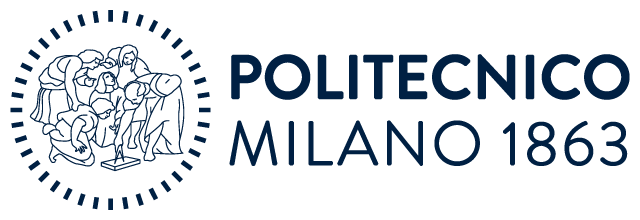Quaderni MOX
Pubblicazioni
del Laboratorio di Modellistica e Calcolo Scientifico MOX. I lavori riguardano prevalentemente il campo dell'analisi numerica, della statistica e della modellistica matematica applicata a problemi di interesse ingegneristico. Il sito del Laboratorio MOX è raggiungibile
all'indirizzo mox.polimi.it
Trovati 1287 prodotti
-
MOX 52 - 25/11/2004
Bottasso, Carlo L.; Maisano, Giorgio; Micheletti, Stefano; Perotto, Simona
New recovery based a posteriori error estimators | Abstract | | In this paper we formulate some new a posteriori recovery-based error estimators. The first one provides us with an improved approximation for the solution gradient. The other two furnish and estimate for the $L^2$-norm of the error on the solution itself. In more detail, the first estimator is a variant of the well-known Zienckiewicz-Zhu method and it turns out to be exact 1D for quadratic solution on non-uniform grids. The second one is based on a solution enrichment relying upon the Zienckiewicz-zhu recovered gradient. Finally the third estimator consists of a roughening of the solution followed by a Zienckiewicz-Zhu-like recovery applied to the solution itself. The three new proposed methods are compared in terms of their effectivity indices and solution accuracy on two and three dimensional problems |
-
MOX 51 - 11/11/2004
Leupi, Celestin; Miglio, Edie; Altinakar, A.; Quarteroni, Alfio; Deville, M.O.
Quasi-3D Finite Element Shallow-Water Flow with $k- epsilon$ Turbolence Model | Abstract | | An extension of a three-dimensional (3D) finite element method is proposed for shallow-water equations (SWE). The method is based on the Raviart-Thomas finite element approximation. A numerical solution for shallow-water flows is developed based on the unsteady Reynolds-averaged Navier-Stokes (RANS) equations. In this work the assumption of hydrostatic pressure is applied. The SWE equations are solved in a given multilayered system (which consist of an a priori subdivision of the vertical direction of the domain into layers of fixed thickness), with a semi-implicit time stepping method. The eddy viscosity is calculated using the standard $k- epsilon$ turbolence model. The boundary conditions at the bed are based on the equilibrium assumption of the production terms with vertical diffusione terms using wall functions. To test the validity of the new algorithm the model is applied to three-dimensional flows for which experimental data and other numerical results are available for comparison. |
-
MOXP3 - 06/11/2004
Formaggia, Luca; Miglio, Edie; Del Grosso, Luca; Montano, Antonio; Pandini, Stefano
Modello Dinamico di una Imbarcazione da Canottaggio
-
MOX 50 - 03/11/2004
Agoshkov, Valery
Control and Inverse Problems Theory Approaches for Solving Some Hydrodynamics Equations | Abstract | | In this study, we apply optimal control approaches and adjoint equations to construct iterative processes for some problems of hydrodynamics. First, the iterative processes are proposed for an abstract problem given by the system of operator equations.
Second, the general methodology is applied to the generalized Stokes equations perturbed by a skew-symmetric bounded operator, to the stationary linearized Navier-Stokes equations (the Oseen problem) and to the non-stationary Stokes problem. the convergence rates of the iterative algorithms are studied. |
-
MOX 49 - 02/11/2004
Massimi, Paolo; Quarteroni, Alfio; Scrofani, Giovanni
An adaptive finite element method for modeling salt diapirism | Abstract | | Various types of oil traps have been found to be associated with salt domes in sub-surface geology. In this paper the diapiric rise of light salt layers through a denser overburden -the surrounding rocks- is modeled assuming that, in a geological time scale, salt and rocks layers behave like Newtonian fluids. a Lagrangian approach is adopted to track the interface between layers, within the framework of a finite element space discretization. An accurate description of large deformations due to salt movement is achieved using a grid adaptation technique based on geometrical refinement. Different geological cases have been simulated in order to describe the behaviour of rocks and estimate the effect on diapiric growth of buoyancy force, differential loading, gravitational gliding and thin-skinned regional extension. Our computational model accounts also for sedimentation and compaction of overburden. |
-
MOX 48 - 20/10/2004
Perotto, Simona
Adaptive Modeling for free-surface flowm | Abstract | | This work represents a first step towards the adaptive simulation of the motion of water in a complex hydrodynamic configuration, such as a channel network or a river delta by means of different mathematical models. A wide spectrum of space and time scales is involved due to the presence of physical phenomena of different nature. Ideally, moving from a hierarchy of hydrodynamic models, one should solve the most complex model (with solution u_fine) to accurately describe all the physical features of the problems at hand. In more detail, for a user-defined output functional F, we aim to approximate, within a prescribed tolerance (), the value F (u_fine) by means of the quantity F (u_adapted), u_adapted being the adapted solution confining the most complex model only on a restricted region of the computational domain. We aim to provide an efficient tool able to automatically select regions of the domain where to solve the coarse hydrodynamic model rather than the finer one, while guaranteeing |F(u_fine)F (u_adapted)| below the tolerance (). This goal is achieved via a suitable a posteriori modeling error analysis developed in the framework of a goal-oriented theory. We extend the dual-based approach provided in [3] for steady equations to the case of a generic time-dependent problem. Then this analysis is particularized to the case of free-surface flows. In the last part of the paper an exhaustive numerical validation is carried out, while emphasizing the crucial matter of the time discretization for the dual problem. |
-
MOX 47 - 20/09/2004
Micheletti, Stefano; Perotto, Simona
Anisotropic mesh adaptivity via a dual-based a posteriori error estimation for semiconductors
-
MOXP2 - 16/09/2004
Veneziani, Alessandro; Foa, Erika; Quarteroni, Alfio
Numerical Assessment of Swinsuits Performance
|

